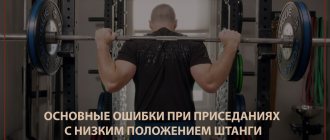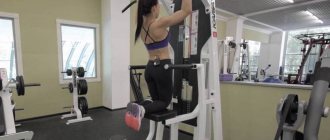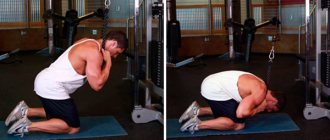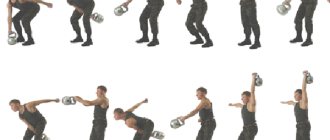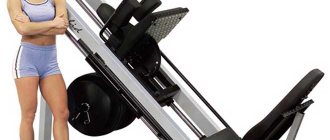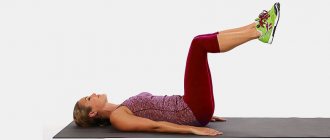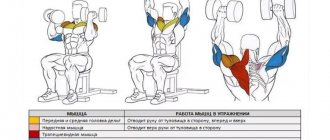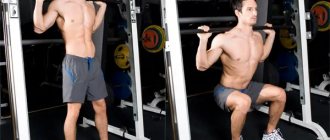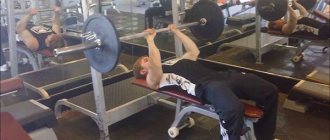Benefits of hyperextension exercise
Let's analyze the name of the exercise in parts. Extension is the extension of the spine, and hyperextension, respectively, is its hyperextension. This does not mean that excessive deflection occurs when performing exercises in the simulator. Its main advantage is traction of the vertebrae, because in this case the spine is not subjected to force compression, that is, axial load.
At the same time, the lumbar extensors, gluteal muscles and hamstrings are strengthened. In general, the entire back surface of the body. The hyperextension machine uses your own body weight to strengthen muscles. But also for those who have little exercise over time or need to gain muscle mass, there is the possibility of adding weight using weights.
How to replace hyperextension at home: exercise options
Also, on the question of how to do hyperextension at home, you can pay attention to exercises that are similar in their action and work the same muscle groups.
Exercise Good morning
The good thing about an exercise called “good morning” is that it allows you to load your lower back exactly as much as needed, which is something that regular hyperextension cannot always allow.
It is important to ensure that your back is straight when performing the exercise, and that a natural deflection is maintained in the lower back. Due to your lack of flexibility, you may not be able to do deep forward bends right away, so do the exercise as far as stretching allows.
If you use weight for the exercise, keep it light so that your lower back is not overloaded. Movements should be smooth and slow, and the weight should be located in the shoulder blades or on the rear delts.
Plank exercise
The plank is a wonderful static exercise for the lower back, in which almost all the muscles of the body will be evenly loaded. The main emphasis when performing it lies on the stomach, but the lower back also works fully, being responsible for stabilization. The plank also allows you to use deep muscles that are not used in other exercises. The plank can be performed both on the elbows and on outstretched arms, changing the angle of inclination, load and working muscles.
The body should be straight when performing the exercise. The entire body from head to heels should be in a straight line.
Exercise cat/dog
It is also a good and effective exercise that can replace hyperextension if done correctly. At the same time, it is quite simple. The exercise gives less load, but it is useful in that it allows you to relieve the load on your back. It is especially suitable for those who sit for a long time or often place axial loads on the spine. Exercise helps to stretch the abdominal muscles and improve their tone. In addition, it is suitable for everyone, regardless of level of training, and can be performed in any conditions.
Hyperextension exercises at home, with videos showing you how to do them, can work just as well as going to the gym. It is only important to master the correct technique and practice regularly, and then the benefits for both health and figure can be invaluable.
Harm and contraindications
Despite the apparent safety of the exercise, problems with the cardiovascular system, including hypertension or vegetative-vascular dystonia, will affect the general condition of a person when performing upside down bends. Therefore, dizziness and fainting are possible with hypotension, nausea and increased blood pressure with hypertension.
In any case, atonic vessels in unprepared people cannot cope with increased blood circulation and provoke dizziness and fainting, so you should perform the exercise very carefully.
Of course, you should not perform the exercise for pregnant women, in the postpartum and postoperative period.
Technique for performing hyperextension
Let's consider the general technique of execution, regardless of the angle of inclination of the simulator.
- The pads of the exercise machine for supporting the hips must be adjusted in advance according to height so that they are located under the pelvis and do not interfere with the free movement of the even spine.
- Place your feet on special supports, if provided, and place your heels under special bolsters to secure your shins.
- Lower your straight spine down so that a straight line is formed from the sacrum to the crown, and relax completely.
- Place your hands behind your head or on your chest.
- As you exhale, lift your torso in line with your hips, but not higher, keeping your lumbar spine straight.
- As you inhale, gently lower your straight spine down.
Do not rush or sway during the exercise. Move up a little faster and down a little slower.
At the bottom of the movement after the last repetition, you can relax, stretching the muscles and vertebrae, then you need to slowly lift your torso and get up from the machine. Between approaches you should walk around the gym, and under no circumstances hang upside down during the entire recovery period.
Hyperextension on a horizontal bench for the buttocks
Now, look at the photos below, hyperextension in design No. 1 (whichever is better) (unfortunately, I couldn’t find normal photos where the back is rounded, looking down, so I’ll show you an example of where the back extensors work, the main thing is to understand essence):
Do you see? If you do it in this design (on a horizontal simulator), then absolutely everything is the same as shown and said in the photo above, only keep your back rounded all the time, not straight, but rounded.
And look not straight ahead, but down. That's all!!!!
In fact, this is the whole difference in the technique of execution, the emphasis on the buttocks + hamstrings (the back is rounded all the time + look down) and the extensors of the back muscles (the back is straight all the time + look forward).
In general, in my opinion, the exercise is quite complex, despite the fact that at first glance it seems quite simple (as they say: appearances are deceiving), because, as you can see, in order to plow the buttocks you need a lot of things to watch, I will repeat the important thing:
- Keep your back rounded all the time (so that the extensors do not work and steal the load from the buttocks and biceps of the thigh), + especially carefully watch your back at the top point (when lifting from below), because in my experience, very often people have a desire to straighten when lifting back, and this is unacceptable, because the extensors will immediately turn on and steal the load from the buttocks. In general, your back should be rounded at all times! From the beginning of the exercise to the very end!
- The position of the head (gaze) also affects the roundness of the back. If you hold your head up or just straight = you won’t be able to properly round your back; therefore, the head should be lowered down and the gaze (look) should be at one point, about 2-3 meters from your head... this nuance is very important, do not miss it.
- Constantly throughout the entire exercise, consciously keep your buttocks tense (without unclenching), + at the top point, do a peak contraction (squeeze them even more). This is done specifically in order to load your buns to the maximum, because thanks to this technique, the load on the buttocks occurs from the very first second and does not stop until you stop doing the exercise.
- Constantly (each repetition) monitor your breathing, lowering - inhale, rising - exhale. Never squeeze your breath; in all exercises, you need to breathe correctly.
Types of hyperextension machines and their differences
Oblique hyperextension
This design involves positioning the body at an angle. Here you can change the angle of inclination depending on what degree of muscle stretching is necessary. The essence of the corner machine is to have a stronger impact on the hamstrings and buttocks , since it is in this position that the muscles are stretched more strongly.
Horizontal hyperextension
This design allows you to perform hyperextension only in a horizontal position, that is, the body is raised to parallel with the floor. Such a machine, of course, uses the hamstrings and gluteal muscles, but does not stretch these muscles so much, but allows you to emphasize the load on the lower back. The design also allows for reverse hyperextension. The presence of special handles allows you to grasp the support and lift your legs up instead of your torso, thereby fixing the position of your back.
Reverse hyperextension
Despite the fact that reverse hyperextension can be performed in any machine, there are special designs equipped with a block with leg rollers. This design allows you to abduct the legs with a certain load.
Why do you need a hyperextension machine?
Standard hyperextension is a machine with a platform for supporting the body, a platform for supporting the legs and rollers for securing the legs. This is a standard layout, but there are combined options that include hyperextension and a bench to work the abdominal and abdominal muscles. The difference is a longer platform for resting the body and the presence of leg bolsters located on both sides of the projectile.
What muscles does hyperextension pump?
As already mentioned, hyperextension is a basic level exercise that is aimed at working the muscles of the lower back or, as they are called, the extensors of the back, buttocks and muscles of the back of the thigh, simply the hamstrings. But it’s worth noting right away that these are not all the muscles that hyperextension uses; depending on a particular technique of execution, different muscle groups will be involved. The technique of performing the exercise on this apparatus is very important, since the main load for a non-professional user is on the lower back, i.e. on the extensors of the back muscles, although in fact this simulator allows you to pump the entire spinal corset. A small part of the effect goes to the hips, since for beginners the stretching of the muscles is usually not great, so when performing the exercise, the muscles are stretched and therefore they work independently. And of course, the buttocks are one of the most important muscle groups, especially for girls, but pumping them up requires especially careful adherence to the technique of performing hyperextension exercises.
Who should perform hyperextension and when?
Since this exercise is fundamental in back strengthening training, it is recommended for all beginning athletes to perform it before attempting more complex exercises such as deadlifts, barbell squats, or bent-over barbell rows. These exercises are multi-joint and require the athlete to have higher endurance of the back muscles, which can be achieved by correctly performing hyperextension exercises. Also, if a beginner or an experienced athlete has back injuries or other problems associated with it, then performing hyperextension exercises will gradually strengthen the muscles of the lumbar region, without putting the spine and tendons at risk of injury, pumping them to a level at which you can perform multi-joint exercises. And of course, this exercise will be very useful for people with sedentary work and a sedentary lifestyle. In the long term, regular performance of hyperextension exercises leads to strengthening of the back muscles, as a result of which posture is corrected and signs of osteochondrosis or scoliosis are gradually removed.
Buy hyperextension
Variants of hyperextension with weights
For those who need to develop strength or size in target muscles, it is recommended to perform hyperextension with weights, such as a plate or barbell. In this case, the location of the weighting agent will complicate or simplify the load on the muscles. Let's take a closer look at the inventory position options.
With a pancake pressed to your chest
In this case, you can take the weight from the floor yourself and press the weight to your chest, crossing your arms on it. In this case, the weight is partially supported by the strength of the arms, which slightly weakens its weight. The closer the weight is to the stomach, the easier it is for the muscles to work with this weight.
With a plate or bar on your back
You can’t do without an assistant here. The partner must put the weight on his back, as well as pick it up after completing the approach. Without this, performing the option yourself can cause injury. In this case, the lower back muscles independently lift the weight without transferring part of the load to the arms. At the same time, the center of gravity shifts, which significantly increases the intensity of the load compared to the previous option.
With a pancake on straight arms
After you have taken the starting position, take the pancake from the floor and hold it with your palms at the edges. When bending down, do not lower the pancake to the floor, maintain tension in your back and arms, and as you exhale, rise to the upper limit of the amplitude, holding the pancake in straight arms. This option can also be performed with a barbell. In the same way, the barbell is lifted from the floor with straight arms, with the palms positioned shoulder-width apart.
Benefits of Exercise
Reverse hyperextension is considered safer compared to the classic version - the risks of spinal injuries are practically eliminated. Such training is recommended for back pain or problems with the spine. This exercise is suitable if you have a hernia, protrusion or osteochondrosis of the intervertebral discs.
In addition to the back, the muscles of the legs and buttocks are well used here. Thanks to this, you can use more weight and, as a result, get results faster.
Important! In the gym, always consult with a trainer about the advisability of performing certain exercises. If you have problems with your spine, be sure to tell your trainer and consult your doctor.
Recommendations - how to do hyperextension
Let's take a closer look at why and how best to perform hyperextension in the simulator and its varieties:
- In order to strengthen the lower back, you should perform the exercise at the beginning of the lesson without weights for 10-15 repetitions, relying on your own sensations, and so on for 2-3 approaches, increasing the number of approaches and repetitions over time. You should perform the exercise for rehabilitation purposes no more than 3 times a week with your own weight.
- Also, in order to stabilize the spine , before basic exercises such as deadlifts or squats with a barbell, you can perform hyperextension to tone the back extensors. Thus, toned, but not overworked, the lower back muscles easily fix the correct position of the spine when performing the technique. You should perform 15-20 repetitions in 3-4 sets without weights.
- To strengthen and build thickness in the lower back while gaining muscle mass, you should perform various variations of weight-bearing exercises, but no more than 2 times a week. One option can be performed on back day, for example, after basic exercises for the latissimus muscles, you should include horizontal hyperextension with an emphasis on the spinal extensors. Another option is oblique hyperextension, which should be performed after basic exercises for the legs, especially the hamstrings. This option will allow you to load the hamstrings by strongly stretching the muscles of the thigh and buttocks. The weights should be selected in such a way that the number of repetitions is 8-12 repetitions, 4 sets in total.
Reverse hyperextension at home
There is also a so-called reverse hyperextension, which can also be done at home. What's the difference?
The difference is that in this case it is not the body that rises - it remains motionless - but the legs.
The starting position is that you need to lie on a bench in such a way that your stomach right up to the pelvic area lies on it, and your legs hang down without touching the floor. In this case, the shoulder blades should be compressed, and your hands should hold on to a bench or some other available support.
While exhaling, you need to raise your legs to a horizontal position or slightly higher with a delay of 2 seconds, straining your gluteal muscles. This is followed by a return to the starting position. To increase the load, you can use weights.
And again there are three ways to do it:
- First. The exercise described above can be performed on two chairs, for example.
- Second. Lie face down on the floor, arms extended along the body. The head, shoulders and arms are raised along with the legs so that it resembles a boat or paperweight. After a short delay, the torso and legs lower. To increase the load, you can use a ball, which you need to hold between your feet and try to lift it without missing out on the upper phase of the exercise.
- Third. The fitball is used again. You need to lie with your hips on the ball with your hands in front of the projectile. Legs are straight, toes touch the floor surface. They are raised so that they, together with the body, form a straight line, with a delay of 3 seconds. Do three sets of 20 repetitions.
Exercises for girls and boys: is there a division?
Looking ahead, we should immediately make a reservation that all of the exercises listed are universal, that is, suitable for both sexes and almost all ages without any restrictions.
There are contraindications, and they are associated with certain diseases that affect only a small percentage of the population.
What unites girls, women, boys and men in this case? Yes, only one thing: look better, have good health and prevent many diseases. These ailments are directly related to physical inactivity and a sedentary, sedentary lifestyle. Any sane person dreams of strong and beautiful muscles, a flat stomach and toned buttocks.
Men and more trained women can increase the load in all ways available at home, and do more approaches and repetitions.
That's the whole difference.
Contraindications
Of course, any sport or physical activity generally has contraindications. Here they are:
- Injuries to the tailbone, lower back or spinal column.
- Hernias. At the same time, exercise therapy is not recommended in any form, since it will only aggravate the situation, provoking an increase in it. In addition, the pain will increase, and the matter may end in surgery.
The exercise can be done in a light form even in early pregnancy after prior consultation with your doctor.
